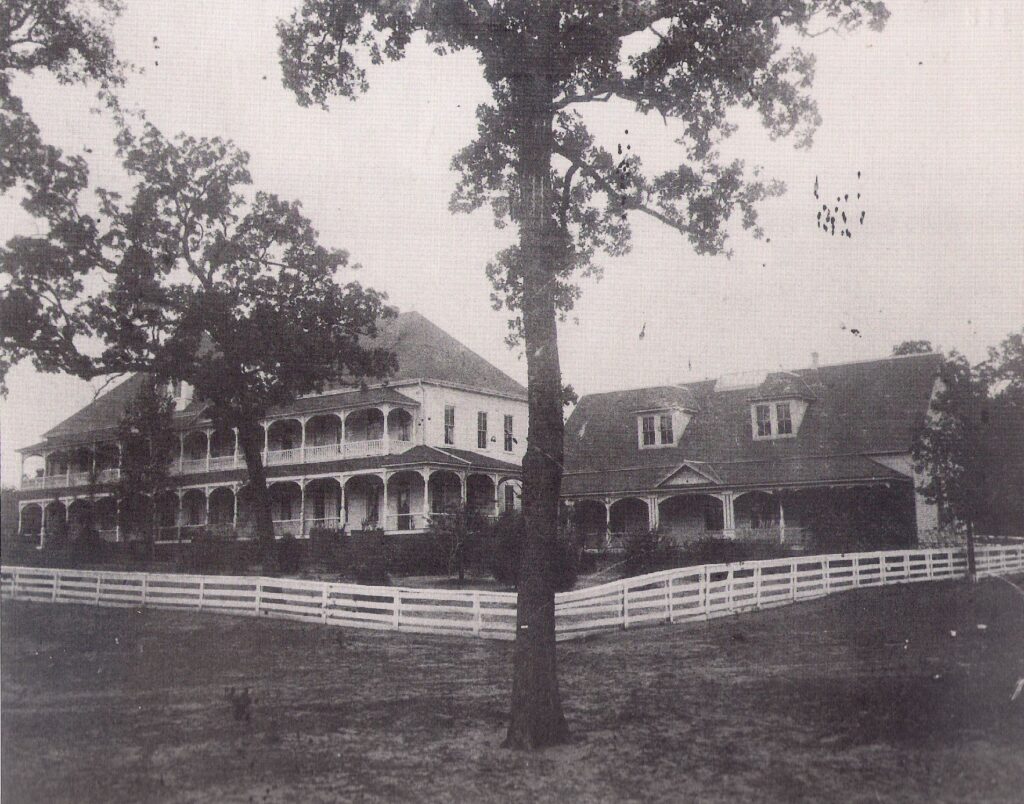
Bloomfield Academy for Chickasaw females opened in 1852 near Durant, Oklahoma. After several fires, it was relocated to Ardmore, Oklahoma in 1914. It was renamed Carter Seminary in 1932 and continued as a boarding school for girls until 1949 when boys were admitted. Four years later boarding students were integrated into Ardmore City schools.
Chickasaw girls attending Bloomfield in the late 1800s and early 1900s received education and training far superior to most public schools. Graduates of the academy continue to share their academic and cultural achievements wherever they lived.
Below is a link to a 1920 postcard of the Bloomfield Academy complex on Chickasaw Blvd and Veterans Blvd where it would later become Carter Seminary.
https://oklahomahistory.net/ttphotos4a/Bloomfield1920.jpg
Recorded by Betty Carroll January 25, 1987: “Once Upon A Time…. Reverend John H. Carr, a Methodist missionary found a patch of land 15 miles south of Durant in 1852 he thought would be an excellent location for an academy specifically for Indian students. He set up his tent in a grove surrounded by prairie grasses interwoven with colorful wild flowers. This inspired him to name the new school that would begin under the sponsorship of the Methodist Mission Conference and in conjunction with the leaders of the Chickasaw Nation Bloomfield Academy. It was renamed Carter Seminary in 1934 as a tribute to Charles D. Carter of Chickasaw and Choctaw descent, who represented the 4th District in Congress from 1907 to 1926. The school eventually relocated in the NW section of Ardmore when the federal government purchased the old Hargrove College in 1916 for the Chickasaw Indians. Carter Seminary was established and funded by the federal government to partially fulfill the treaty obligations of the United States to the Indian people. In 1952 the Bureau of Indian Affairs decided to make Carter Seminary a home-living community and to send the students to public schools.”
Springer Public School – 1908
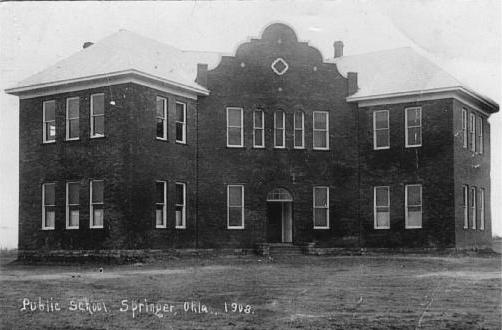
“Mr. Bridges: Mr. Bradley Martin of the Fort Smith Trolley Museum has apparently correctly identified the bell of Wayne Denham as a carriage bell and not a street car gong. He gives a description of a street car gong in case you ever run across one. I hope this helps.”
Wayne Denham has taken his carrage bell and mounted it to a steel place and made it into an attractive piece of history. Below are a couple pictures Wayne sent in:
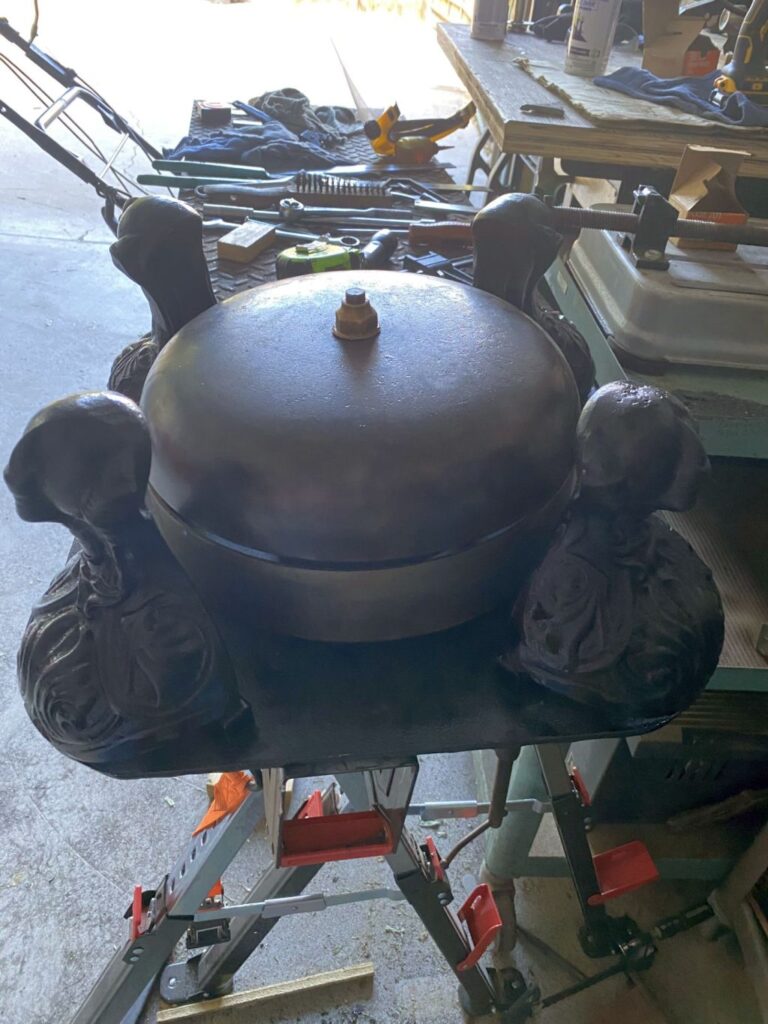
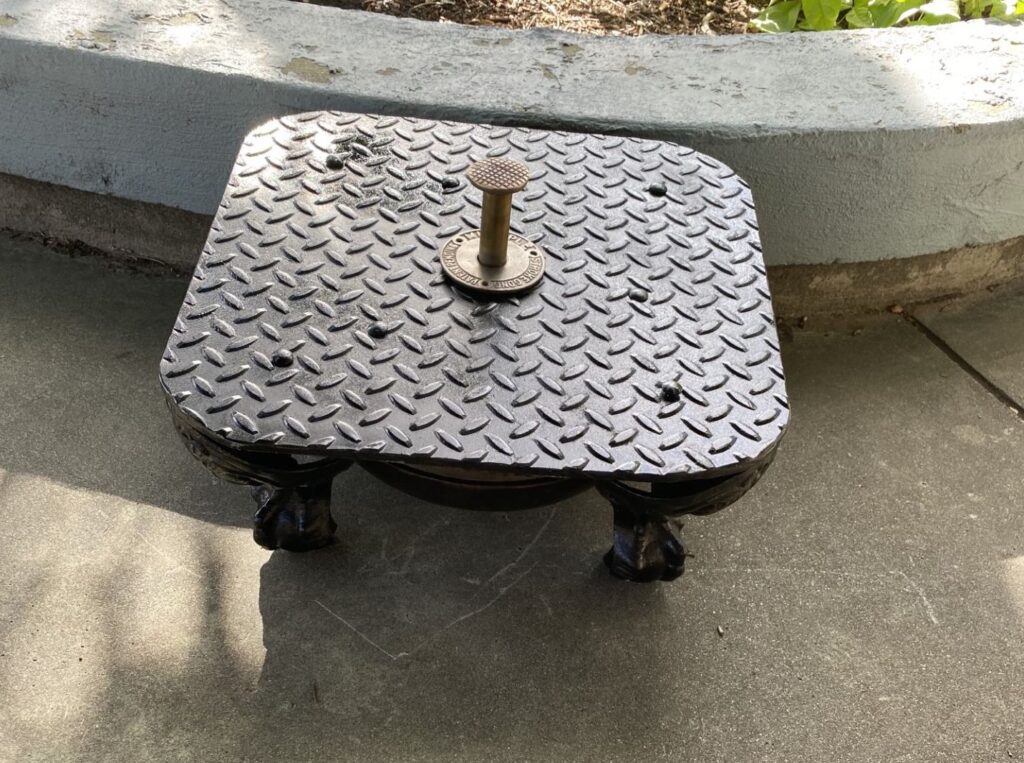
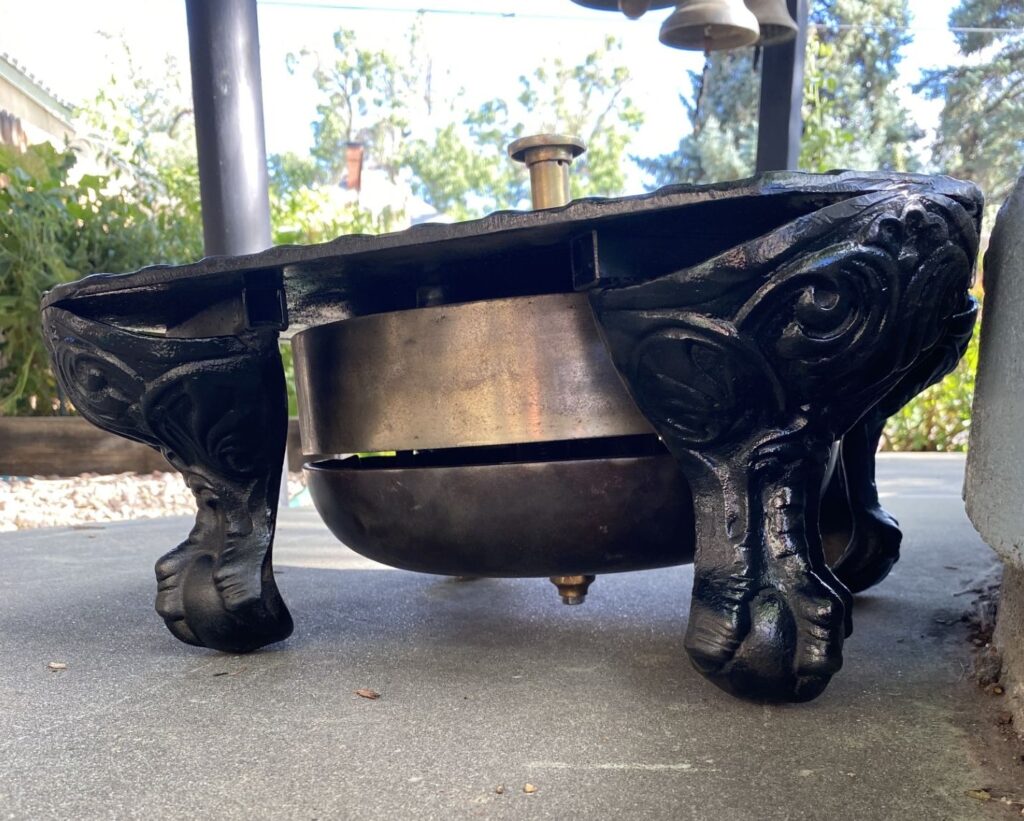
The Mailbag
The little train called the Dinky used to run in front of our house when we lived in the country about 5 miles east of Ardmore on Hoxbar rt. which was the east extension of 3rd Ave. It was a pretty neat little train. Sometimes if I were near the tracks one of the guys on the train would throw me a pack of gum, usually Wrigley’s Doublemint. -Wayne Mitchell
Saw this today on the Dinky after reading your newsletter. -George Pretty
https://www.madillrecord.net/news/who-remembers-dinky
Nice short essay on the Miller’s DQ. It was an absolute favorite of my family. My dad would take us there regularly for milk shakes that would be made from actual, real fruit, and thick as can be. The Millers always knew us by name when we came and would chat with my dad. They even would remember me when I’d come by with my little league teammates for a cherry phosphate. Their neighborliness was as excellent as their milk shakes. Sure do miss the days of local, small businesses that provided excellent service, plus great friendships. -Skip Joers
I remember the Dinky train. I used to ride it from Durant to Madil to visit my cousin, aunt, and uncle. They were the Turleys who owned a men’s clothing store on the square in Madil. This was in the 1940’s. -R. Helms
Butch, I ran across this engine nearly 20 years back and recently went back to see if it was still there. It was used to operate several Oklahoma Pattern oilfield pump jacks in Carter County west of Fox. I was amazed to fine that it hasn’t been sold for scrap iron as all the other old engines and pump jacks have been that I previously found. It’s an early day Bessemer gas engine. These were top dollar engines back in the day. This was once in a power house at this exact location and it ran for many years. I don’t have a manufacture date for this particular engine but wouldn’t be surprised if dates back before 1920 or at least shortly thereafter.Also the old bandwheel is still there. The bandwheel was produced by The Joseph Reid Gas Engine Co, Oil City, Pa. with a patent date of Sept. 2, 1913. This equipment needs to be in a museum. Wish I had it in my collection. -Dwane Stevens
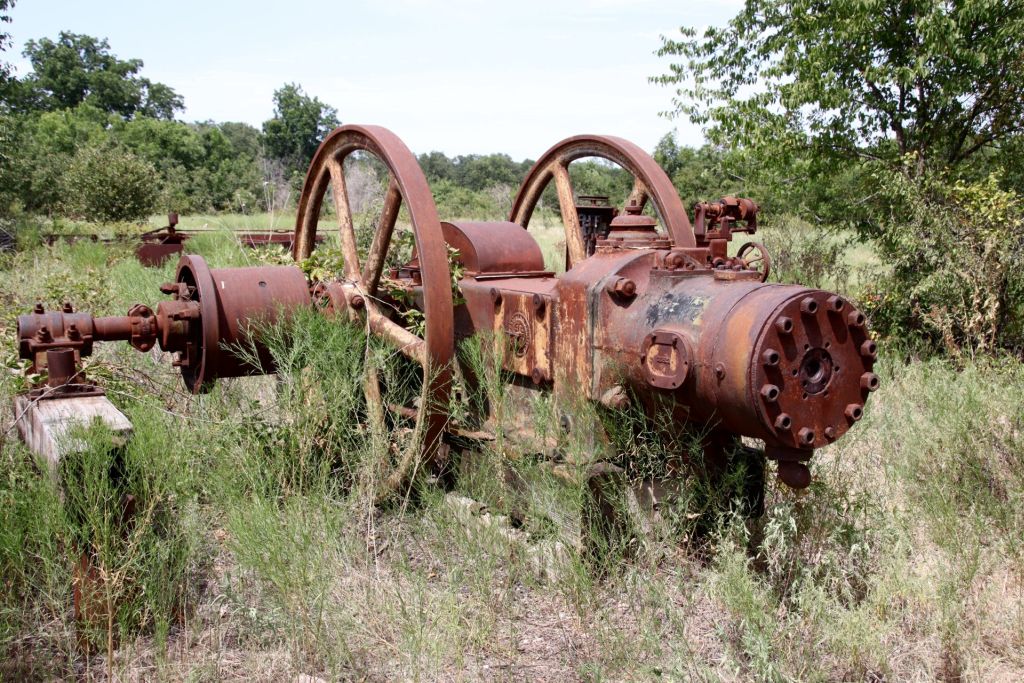
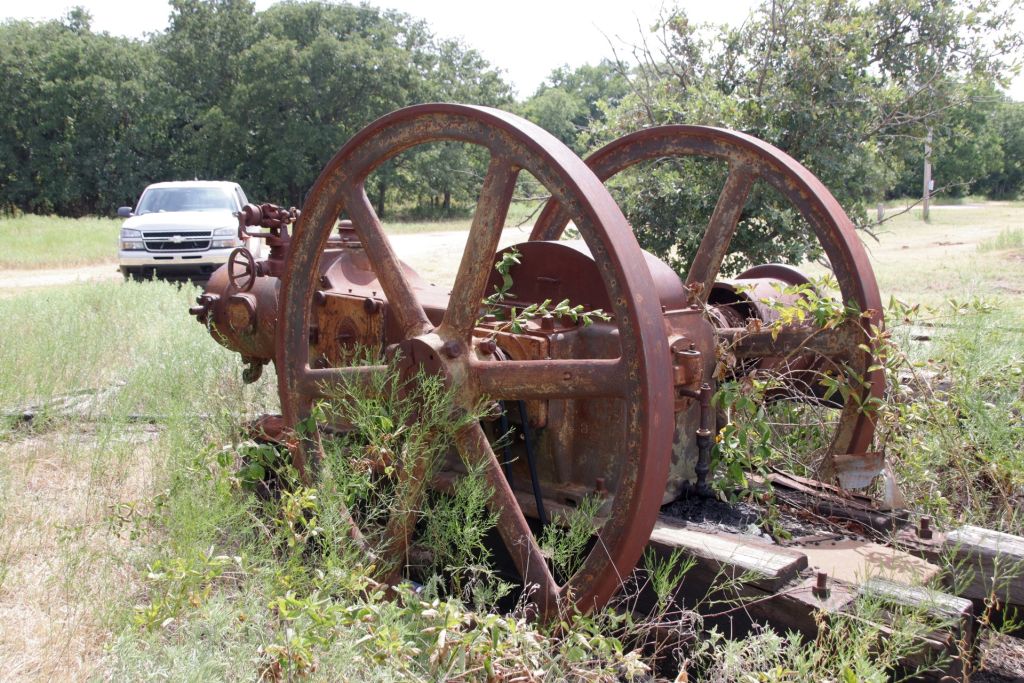
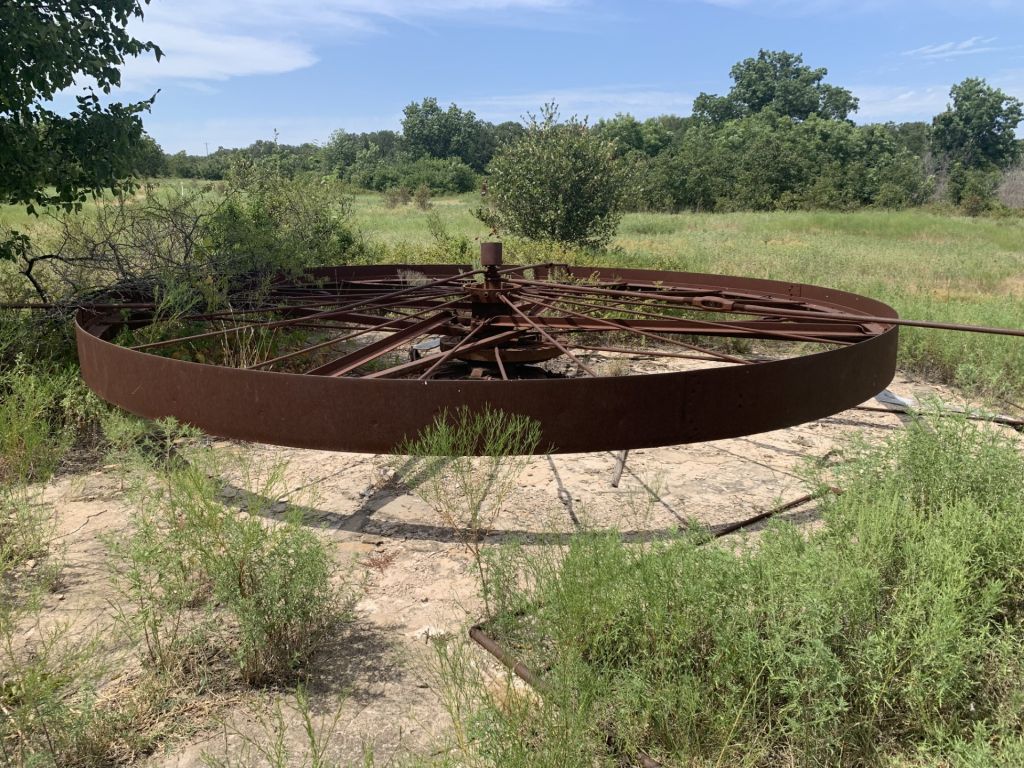
The story about Fireman’s Lunch broght back fond memories. I got my first shotgun from my parents when I was 10 in 1956 and Fireman’s Lunch was my favorite breakfast places before duck hunting with my dad when I would have a stack of “Jelly”s” hot cakes. The new Hamburger Inn, after being located across Washington, and Doc’s Pig Stand were the two other places we would eat before going hunting, but Fireman’s Lunch made the best hot cakes and I can’t tell you why. Back then I was a growing boy and I could eat a long stack. Now, I’m doing well to eat one cake the size he used to serve. -Monroe Cameron
HAM Radio Talk KC5JVT via EchoLink
I’ve made serveral HAM radio contacts in Germany since last December. But this week I made contact with Bernhard but he was on vacation in Italy. We had an interesting conversation, and he spoke great English, unlike a few HAMs I’ve talked to in Germany this year. I’m looking forward to more conversations with Bernhard and who knows, we are probably distant cousins going way back in the Carmon line. My aunt on 4th NE, Pearl Carmon, whose parents were born in Germany, was made to register at the Ardmore post office when WWII started. 🙁
274. 9/06/23 3:45pm DL4NAT Bernhard Schulz in Bamberg Germany
https://www.qrz.com/db/DL4NAT
Below is from my Vol 4 Issue 177 September 9, 2000 newsletter:
This week I learned from a friend about a program called Heartland Share. Even though the program has been operational in Ardmore for nearly 2 years, I didn’t know about it. But it really looks like a great program to help people lower their food bills and also build stronger communities.
All a person has to do is volunteer two hours of service, pay a $14 fee plus tax, and also a $1 transportation fee for each share they want. What does one share consist of? Typically four packages of frozen meat, fresh fruits, vegetables, and two or more staple items. All this would cost approximately $30 or $35 at the grocery store. The Heartland Share organization distributes no generic, seconds or commodity goods. Here is an example of the food included in one monthly share:
20 ounces of BBQ beef, 2 pounds of split chicken breasts, 8 ounces sausage links, 1 pound of chicken fajita meat, 1 pound of hamburger meat, 4 pounds of potatoes, 1 pound of carrots, 2 red peppers, 2 pounds of lettuce, 4 Gala apples, 2 bartlett pears, 1 pound of red seedless grapes, cheese, fudge brownie mix.
The Heartland Share Program looks like a great program to help people, especially when a family has children to feed. I want to share a story with everyone, but we have to go back to 1929. My grandfather, Stanley Carmon, in his own way, helped feed some of the needy children near his home on 3rd NE and probably didn’t even realize it at the time. I learned about it 40 or 50 years later, long after my grandfather’s death.
The fall of the stock market in 1929 would mark the beginning of the Great Recession. I might add that because there was not a high tech electronic communication system in place as we have today, it would be three and one-half years later before things had deteriorated to the point the President closed the banks, and declared a “bank holiday”.
Little Elmer G. Elliott along with his mother, father and brothers and sisters, lived in the 300 block of K Street Northeast. My grandparents lived just around the corner at 3rd and K Northeast. Remember, I was not told by Elmer Elliott this story until about 1970. He told me my grandfather had a good job, making at least $50 a day, when during the depression, men who could get a job, were lucky to make 50 cents a day. My grandfather Carmon was a bricklayer and roofing contractor during the depression, and always had a good income during those years. So they always had plenty to eat at the Carmon house.
Elmer told me he and his brothers and sisters had nothing to eat at their house because his father could not find a job. But they always knew my grandfather would have food on the table around 5:30pm each evening. So they would head over to the Carmon place and Stanley and Addie Carmon would always make room at the table for them and any other children in the neighborhood. Elmer said he really believed they would have starved to death had it not been for the Carmons allowing them to eat at their table during those depression years of the 1930s.
Last week there was a going away party for Beth Allen in the County Clerks Office at the courthouse. Beth worked for the County Clerk about 7 years, and her smile is going to be missed around the Carter County Courthouse. Her husband transferred to eastern Oklahoma and everyone tried to talk her into just letting him stay over there, but it was to no avail. True love will always win out!
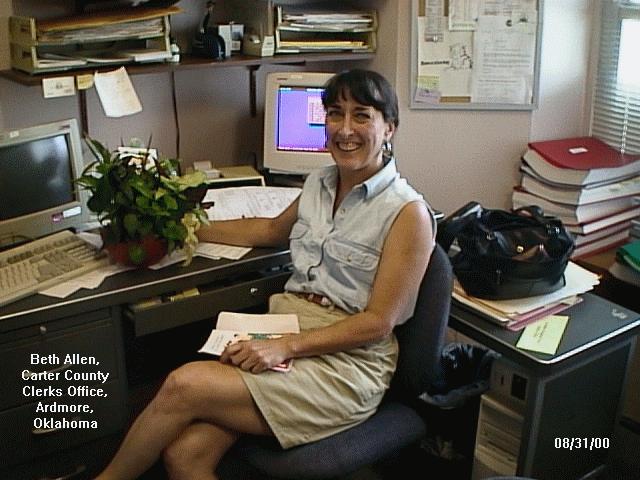
“Butch, Years ago, when we still had Constables in our counties, there was a local race which involved Mickey Cain & Earl Minter running heads up against each other. I considered these two men to be personal friends of mine, but it happened that Mickey only lived about a couple of miles down the road from us. The morning of election day – my wife & I discussed who we were going to vote for. Usually we would vote the same way and she indicated that she would vote the way I did. We voted at separate times of the day, and somewhere along the way she was not sure just who we had agreed to vote for. That evening when the vote tally came in, each had received the exact same number of votes. These gentlemen agreed that they would settle the problem with a toss of a coin. This would not have been necessary if we had voted the same way. Another example of one vote making a difference.” -Ernest Martin, Ardmore, Oklahoma
“Would ye both eat your cake and have your cake?” -John Heywood, 1546
This is commonly misquotes as “You can’t have you’re cake and eat it, too.”
See everyone next week!
Butch and Jill Bridges
Ardmore, OK
580-490-6823
